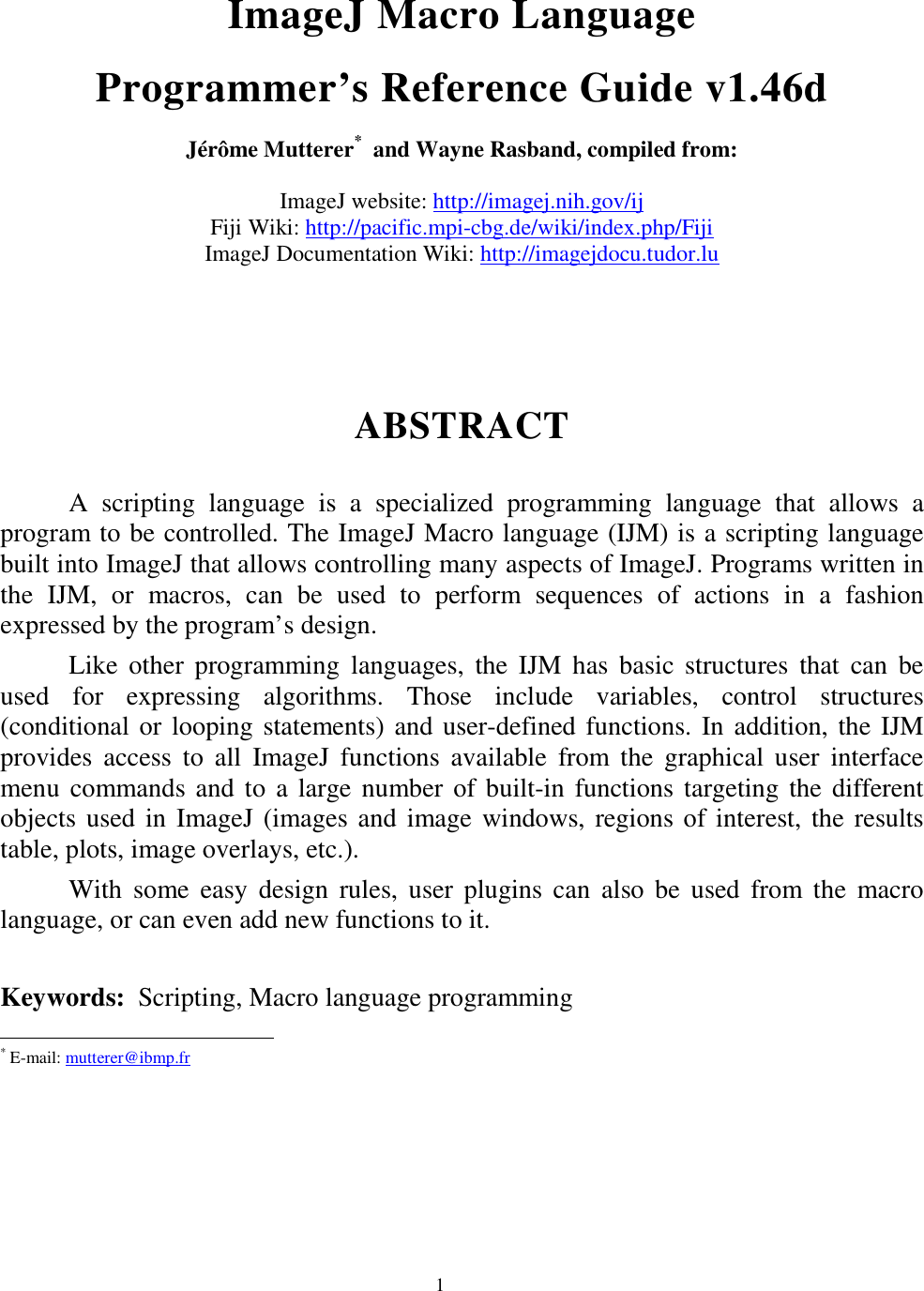
These are not presented as strict methods, but are instead described in detail with the intention of furnishing the reader with the ability to “hack” the scripts for their own needs or write their own scripts for partially and fully automated quantitation of trypanosomes from light micrographs. It then outlines three methods using ImageJ for automated analysis of trypanosome micrographs: Semiautomated cropping and setting image contrast for presentation, automated analysis of cell properties from a light micrograph field of view, and example semiautomated tools for quantitative analysis of protein localization. It provides an overview of how ImageJ handles images and introduces the ImageJ macro/scripting language for automated images, starting at a basic level and assuming no previous programming/scripting experience.
#Imagej scripting software#
This chapter provides an introduction to these methods using ImageJ/FIJI, free and open source software for scientific image analysis.

Methods to partially or fully automate analysis and interpretation are extremely powerful and provide easier access to microscope images as a source of quantitative data. This makes light microscopy a powerful tool for interrogating their biology-whether considering advance techniques for visualizing the precise localization of proteins within the cell or simply measuring parasite cell shape. Trypanosomes and related parasites such as Leishmania are unicellular parasites with a precise internal structure.


 0 kommentar(er)
0 kommentar(er)
